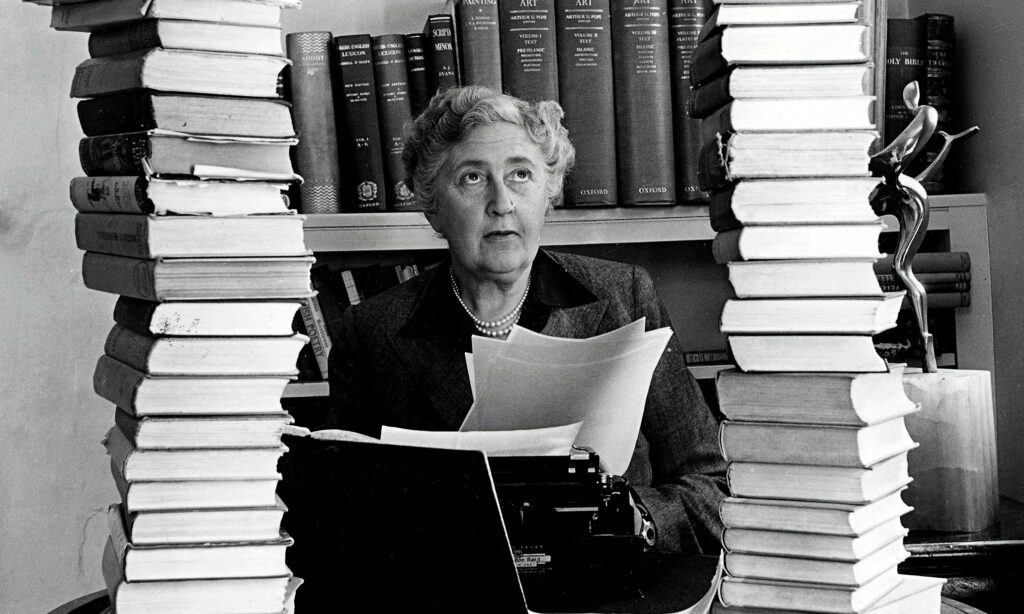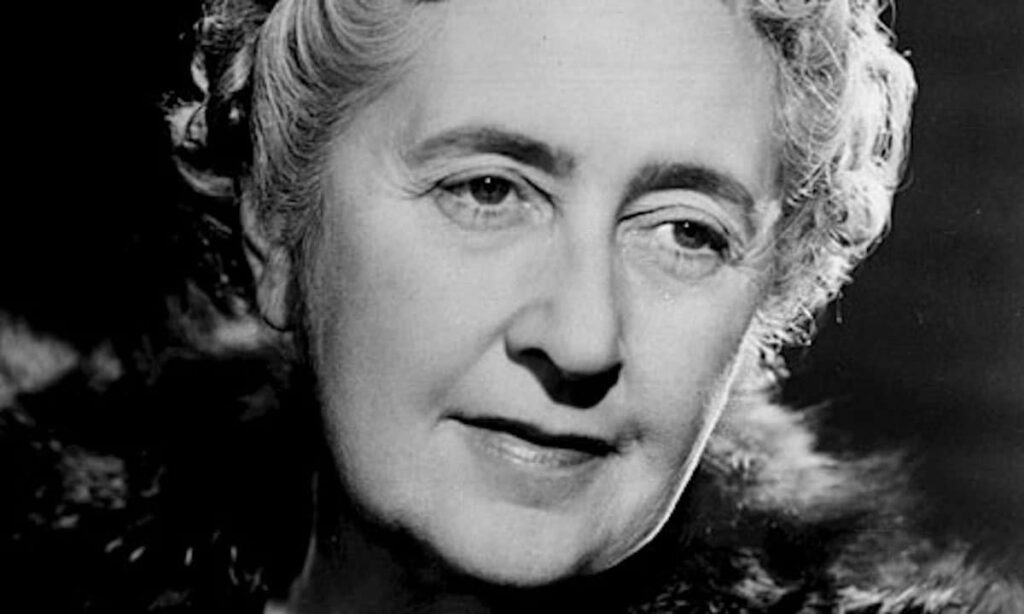10 Mysterious Facts About Agatha Christie
With over 2 billion copies of her books in print, British author Agatha Christie (1890-1976) has kept countless readers up into the early morning hours. Occasionally, the mystery surrounding her personal life—including a high-profile disappearance in the 1920s—has rivalled the best of her fiction. Let’s take a look at some of the verifiable details of the famed crime writer’s life and times.

- AGATHA CHRISTIE’S FIRST NOVEL WAS WRITTEN ON A DARE.
After an adolescence spent reading books and writing stories, Christie’s sister Madge dared her sibling to attack a novel-length project. Christie accepted the challenge and wrote The Mysterious Affair at Styles, a mystery featuring a soldier on sick leave who finds himself embroiled in a poisoning at a friend’s estate. The novel, which featured Hercule Poirot, was rejected by six publishers before being printed in 1920.
- AGATHA CHRISTIE BASED HERCULE POIROT ON A REAL PERSON.
The dapper Poirot, a mustachioed detective who took a gentleman’s approach to crime-solving, might be Christie’s best-known creation. Christie was said to have been inspired when she caught sight of a Belgian man deboarding a bus in the early 1910s. He was reportedly a bit odd-looking, with a curious style of facial hair and a quizzical expression. His fictional counterpart’s debut in The Mysterious Affair at Styles would be Poirot’s first of more than 40 appearances.
- AGATHA CHRISTIE ONCE DISAPPEARED FOR 10 DAYS.
In 1926, Christie—who was already garnering a large and loyal fan base—left her home without a trace. It could have been the beginning of one of her sordid stories, particularly since her husband, Archie, had recently disclosed he had fallen in love with another woman and wanted a divorce. A police manhunt ensued, although it was unnecessary: Christie had simply driven out of town to a spa, possibly to get her mind off her tumultuous home life. The author made no mention of it in her later autobiography; some speculated it was a publicity stunt, while others believed the family’s claim that she had experienced some kind of amnesic event.
- AGATHA CHRISTIE WASN’T BIG ON VIOLENCE IN HER WORK.
While a murder is typically needed to set a murder mystery in motion, Christie’s preferred methodology for slaying her characters was poison: She had worked in a dispensary during wartime and had an intimate knowledge of pharmaceuticals. Rarely did her protagonists carry a gun; her two most famous detectives, Miss Marple and Hercule Poirot, were virtual pacifists.
- AGATHA CHRISTIE HAD AN ALIAS.
Not all of Christie’s work had a mortality rate. Beginning in 1930 and continuing through 1956, she wrote six romance novels under the pen name Mary Westmacott. The pseudonym was a construct of her middle name, Mary, with Westmacott being the surname of her relatives.
- AGATHA CHRISTIE LOVED SURFING.
The image of Christie as a matronly author of mystery is the one most easily recognized by readers, but there was a time when Christie could be found catching waves. Along with her husband, Archie, Christie went on a traveling spree in 1922, starting in South Africa and winding up in Honolulu. At each step, the couple got progressively more capable riding surfboards; some historians believe they may have even been among the first British surfers to learn how to ride standing up.
- AGATHA CHRISTIE TRIED HER BEST TO TAKE UP SMOKING.
While it would shortly gain a reputation for killing its devotees, smoking was once so revered that it seemed unusual not to take a puff. Shortly after the end of the first world war, Christie was quoted as saying she was disappointed, she couldn’t seem to adopt the habit even though she had been trying.
- AGATHA CHRISTIE LOVED ARCHAEOLOGY.
After divorcing alleged cad Archie, Christie married archaeologist Max Mallowan in 1930 and joined him for regular expeditions to Syria and Iraq. In 2015, HarperCollins republished Come, Tell Me How You Live, the author’s long-forgotten 1946 memoir of her experiences traveling. Although she assisted her husband on digs, she never stopped working on her writing: Their preferred method of transport was frequently the Orient Express, a fact that likely inspired her Murder on the Orient Express.
- AT LEAST ONE OF AGATHA CHRISTIE’S FICTIONAL “VICTIMS” WAS INSPIRED BY A REAL-LIFE NUISANCE.
When Mallowan married Christie, he was assistant to renowned archaeologist Sir Leonard Woolley. This fact upset Woolley’s wife, who refused to let Christie stay in a Mesopotamia digging camp; Mallowan was forced to take a train into Baghdad every night to see her. Christie soon wrote Murder in Mesopotamia: The victim was the wife of an archaeology field director who was bludgeoned with an antique mace. Christie dedicated the book to the Woolleys, who never joined Mallowan on an expedition again.
- THE NEW YORK TIMES RAN AN OBITUARY FOR HERCULE POIROT WHEN HE “DIED.”
Like Arthur Conan Doyle before her, Christie eventually grew tired of her trademark character and set about having Hercule Poirot perish in the 1975 novel Curtain. The reaction to his demise was so fierce that The New York Times published a front-page “obituary” for the character on August 6. Christie died the following year.
source: 15 Mysterious Facts About Agatha Christie by Jake Rossen, MentalFloss
Vocabulary
| countless | számtalan |
| Occasionally | alkalmanként |
| mystery surrounding | rejtély övezi |
| high-profile disappearance | nagy horderejű eltűnés |
| to rival | versenyezni |
| verifiable | igazolható |
| famed | híres |
| on a dare | bátorságpróba |
| adolescence | kamaszkor |
| to dare sy to do sg | bátorságpróba elé állítani valakit, hogy meg mer-e valamit tenni |
| to accept the challenge | elfogadni a kihívást |
| to be on sick leave | betegszabadságon |
| to be embroiled in | belekeveredni vmibe |
| estate | birtok |
| to feature | bemutatni/szerepeltetni |
| dapper | jólöltözött |
| mustachioed | bajuszos |
| to deboard | (járműről) leszállni |
| odd-looking | furcsa kinézetű |
| curious | kíváncsi |
| quizzical | különös |
| counterpart | párja |
| appearances | megjelenések |
| to garner | összegyűjteni |
| trace | nyom |
| sordid | aljas |
| disclosed | nyilvánosságra hozott |
| to ensue | következik |
| tumultuous | viharos |
| publicity stunt | reklámfogás |
| amnesic | emlékezetvesztéses |
| slaying | megölés |
| dispensary | gyógyszertár |
| pharmaceuticals | gyógyszerkészítmények |
| pacifists | pacifisták/békepártiak |
| alias | álnév |
| pseudonym | írói álnév |
| matronly | asszonyhoz illő |
| traveling (US) spree | utazási körút |
| to take up | érdeklődni vmi végzése iránt |
| to gain a reputation | hírnevet szerezni |
| devotees | rajongók |
| to revere | nagyra becsülni |
| to take a puff | pöfékelni/dohányozni |
| to be disappointed | csalódottnak lenni |
| to adopt | (szokást) felvenni |
| alleged cad | állítólagos gazfickó |
| archaeologist | régész |
| to assist | segédkezni |
| on digs | ásatásokon |
| renowned | híres |
| to upset | felzaklatni |
| to refuse to | nem hajlandó vmit megtenni |
| to be forced to | kényszerítve van vmi megtételére |
| victim | áldozat |
| bludgeoned | megverve (bottal) |
| mace | jogar |
| obituary | gyászjelentés |
| to grow tired of | belefáradni vmibe |
| to perish | elpusztulni |
| demise | haláleset |
| fierce | heves |






